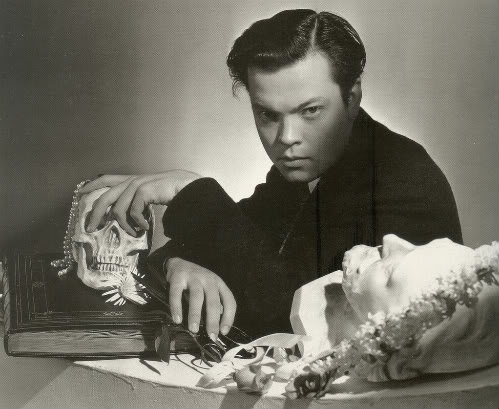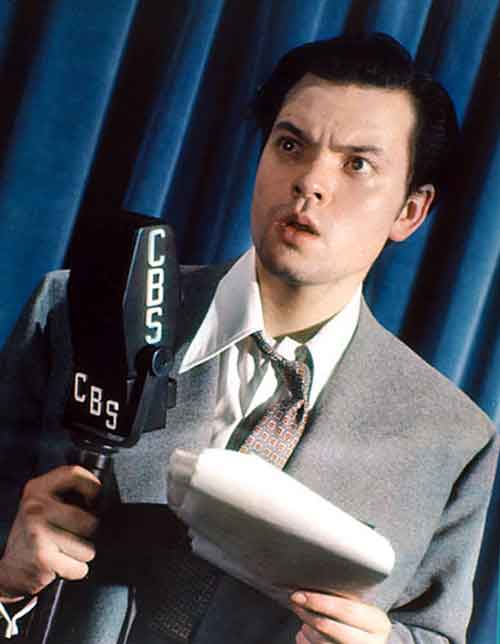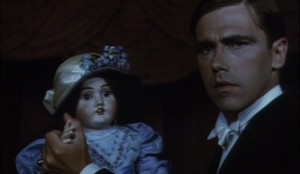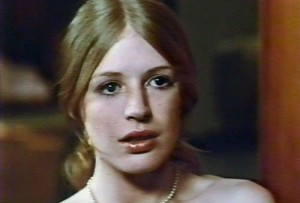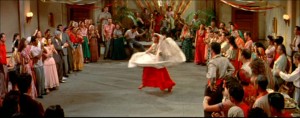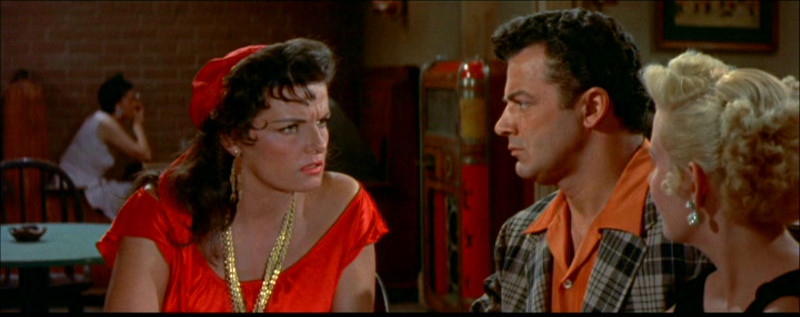Daily Archives: March 9, 2022
GHOST STORY (1975 review)
From Monthly Film Bulletin, July 1975 (vol. 42, no. 498). –- J.R.
Ghost Story
Great Britain, 1974
Director: Stephen Weeks
England; 1930. Talbot and Duller, former schoolmates of
McFayden, are summoned by the latter to a country house
supposedly belonging to a friend of his father for a weekend
of grouse hunting. Ragged and isolated by the other two for
his callow enthusiasm, Talbot is puzzled to find a warm
teacup and an odd-looking doll in his bedroom. In the
morning, he witnesses a scene in the parlor enacted by
people living forty years ago: Robert Quickworth signing
his sister Sophy over to Dr. Borden’s insane asylum, despite
the protests of her maid. At first Talbot assumes this to be
an elaborate practical joke, but after seeing people who
resemble these characters in the village pub and
dreaming or half-dreaming further episodes — in which
the doll leads him to Borden’s asylum -– he becomes
increasingly obsessed with the intrigue. Meanwhile
Duller, who has come to the house to seek ghosts with
‘scientific’ equipment, is disgruntled when all his
experiments fail and he insists on leaving. McFayden
confesses to Talbot that he has recently inherited the
house and invited him and Duller there to ‘test’ it
for ghosts, mentioning a cousin of his father’s who
went mad there. Read more
Hot Blood
From the March 15, 2002 Chicago Reader. — J.R.
While not really a success, Nicholas Ray’s 1956 film about urban Gypsies, made between two of his near-masterpieces (Rebel Without a Cause and Bigger Than Life), has its share of interesting moments and vibrant energies, many of them tied to Ray’s abiding interest in the folkloric. In some respects this color ‘Scope feature comes closer than any of his other movies to the musical that Ray always dreamed of making: there’s a defiant dance on the street performed by Cornel Wilde, a dynamic whip dance between Wilde and Jane Russell that’s even more kinetic, and a Gypsy chorus that figures in other parts. Definitely one of the more intriguing and neglected of Ray’s second-degree efforts. 85 min. A 35-millimeter ‘Scope print will be shown. Gene Siskel Film Center, 164 N. State, Sunday, March 17, 6:00, 312-846-2800.

